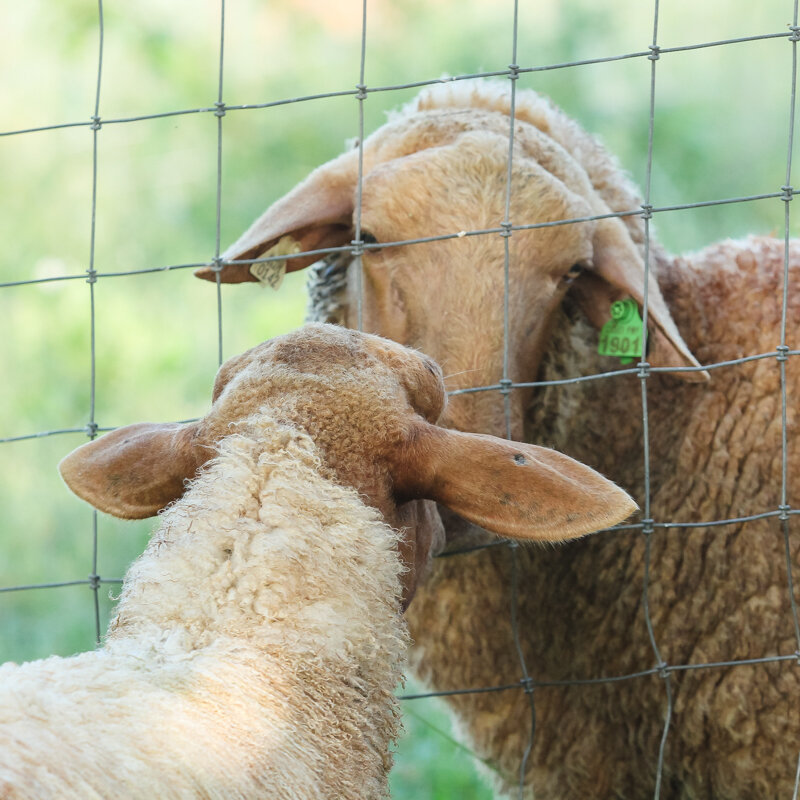Jethro “wooing” a ewe before being turned out with his group.
Most sheep are seasonal breeders, meaning ewes only cycle in the fall when days become shorter and temperatures drop. Tunis do not fall into this category, however, and can breed throughout the year, which essential allows you to have lambs in the spring and fall if that’s what your market demands. We are only lambing in the spring at this point, which means October is breeding season for us. We have two rams, Jethro and Jeb, who each have their own breeding group. This allows us to have enough genetic diversity to avoid bringing in a new ram every couple years.
This past weekend we spent a couple hours sorting the two breeding groups as well as separating the ewe lambs out as we don’t breed them until they’re yearlings. We introduced the rams and will leave them with the ewes until December 1. The gestation period is 147 days for sheep. I like to lamb in March or early April for a couple reasons. The pasture is starting to come in then and that helps cut down on the amount of alfalfa hay the ewes will need while lactating. The temperatures are still cool and that means less stress on the ewes. We remove the rams on December 1. Everyone has gone through two heat cycles by then and should be bred. Any later than that and I’d have May or later lambs and I don’t want that.
We can’t forget about the “woolies” either…the Shetlands and Icelandics. They are true seasonal breeders, so the only time to breed them is in the fall. I have 7 Shetland ewes but am only breeding 4 because we just don’t have a good market for the lambs. As cute as they are and as fun as it is to see what colors we get, that’s not enough to justify adding to the sheep population. I will breed 2 of my 3 Icelandic ewes also, but this may be the last year we do that as we’re probably going to phase out of Icelandics by just keeping the ones we have for fiber only.
Lots to look forward to next spring!




